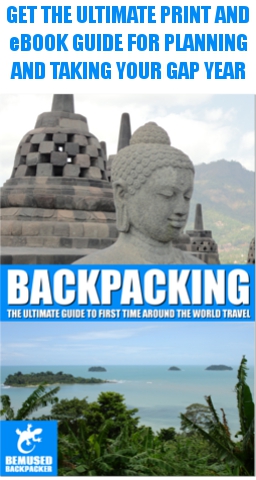
Panama is a destination that just keeps on surprising travellers with a mix of relaxed Caribbean beach life and a futuristic slice of North American city ameneties.
There are a lot of misconceptions and half truths about this enigmatic country, but the truth is Panama is a perfect concoction of multicultural westernisation and chilled Caribbean vibes.
This thin stretch of land is in fact one of the world’s greatest and most famous trading ports, with the famous Panama Canal serving as a perfect crossover from the Pacific and Caribbean seas and has a high level of economic development as a result which is perfectly evident as soon as you set eyes on the gleaming skyscrapers of cosmopolitan Panama City. Despite this, Panama is blessed with amazing dramatic coastlines, barely touched islands and sublime tropical jungles that are a nature lovers dream with abundant wildlife. Given all this, and the fact that Panama has one of the most vibrantly multicultural – yet still distinctly Latin – atmospheres in Central America, it is truly surprising that this amazing country is still only just beginning to open up to tourists.
Culture And Etiquette.
Panama has a diverse range of cultures and religions within its borders, thanks in part to its past, but on the whole Panama is predominantly Roman Catholic with a distinct and unique Latin American feel. Panama also has an extremely strong influence from US culture, making it one of the most Westernised of all Central American countries.
Thanks to the influence of Latin American culture as well as Catholicism, Panamanians are generally quite socially conservative in everything they do, from dress codes to behaviour, and a strong Latin macho culture still pervades through many of the younger generation of men.
What You Need To Know.
Visas.
Any citizen of the UK, Europe, Australia, New Zealand, Canada or the USA do not need a visa to enter and stay in Panama if they arrive by air, and your stamp will last up to 180 days depending on your nationality. Citizens of other countries are advised to check their embassies for the latest updates as the rules change relatively frequently.
Officially an onward ticket is needed for entry into the country, but in practice this is rarely checked at the airport. If you are entering or exiting via a land border however it is advisable to have proof of onward travel.
Visas will be needed if arriving in Panama via sea, unless you re on a cruise ship, and you can get these on arrival for a fee.
Health.
The following list of vaccinations are recommended for visits to Myanmar by the Centre of Disease Control and the NHS Fit For Travel website.
All travellers are strongly recommended to be up to date on their routine vaccinations including MMR, diptheria – pertusis – tetanus and varicella (chicken pox).
Hepatitis A, Tetanus and Typhoid are also strongly recommended.
Hepatitis B, Japanese encephalitis, Rabies and yellow fever are recommended for at risk groups. Discuss this with your physician, specialist nurse or travel clinic to see which vaccinations are suitable for you.
Proof of a Yellow Fever Vaccination will be required if you are travelling from a country where the disease is present.
Malaria risk is currently low to no risk throughout the whole country so antimalarials are generally not advised. There is a raised risk in Darien, Guna Yala, Panam and San Blas Provinces near the border to Colombia but antimalarials are usually not advised unless other risk factors are in place.
Panama is however considered a high risk for the zika virus and dengue fever is also present so anti mosquito measures are advised at all times.
Panama has access to excellent medical facilities and hospitals, especially in the larger cities such as Panama City and David. These facilities are first world standard and English is very widely spoken with many of the medical staff being American or European. The further off the beaten track you get however, the sparser major facilities get. Pharmacies are also available in every major town and city and some are open 24 hours. There are plenty of medications that do not require a prescription too, so Pharmacists should generally be your first port of call for anything minor.
Medical Care is however expensive, as you would expect from a country so heavily influenced by the US, and payment will almost always be expected up front. It is essential that you ensure that your insurance is valid and will cover you for any care you may need. All tourists are however offered free health insurance issued on arrival at Tocumen international airport in Panama City that lasts for 30 days, but this only applies to emergency care. Any routine care or any other treatment that is not an emergency will not be covered by this.
Crime and Safety.
Panama has an unfortunate and not entirely deserved reputation for being a dangerous country to travel through, but this really is not the case. There are of course areas where tourists are advised not go, such as the infamous Darien gap on the border with Colombia and the general border region where guerrillas and bandits can still operate, but by sticking to the cities and the national parks or heavily populated tourist spots you will be absolutely fine. Like any other major city in the world, crime does of course exist in Panama City, Colon and David, amongst others, but there is no reason to assume it will be any more dangerous than your home city and reasonable safety and security precautions should be more than adequate.
It is a legal requirement to carry your passport at all times in Panama, but the official advice from the police service states that it is acceptable to carry a photocopy for day to day sightseeing. Your official passport should only need to be shown at official border crossings or in transit. There are tourist police available in Panama too, noticeable in Panama City by their white armbands, and these are often very well set up to help tourists in the case of an emergency and will generally speak English quite well.
Costs and money.
Panama uses US dollars as its primary currency although it does have its own coin system called centavo, plus a 1 dollar coin.
Panama is one of the more expensive Central American countries, but is still quite cheap by most Western standards. A midrange traveller with a private room can usually get by on between £30 – £40 GBP a day, but a budget traveller can shave a significant amount off that, and can get by on between £10 -£20 a day by staying in dorms, eating at local food stalls and limiting activities.
Transportation is relatively cheap in Panama too, if you stick to the overland buses. Unlike other parts of the world budget air travel seems to be a mythical thing in Central America and cheap flights are non existent, so it is a lot cheaper not to fly if you can help it.
Like on many trips, it is the activities which will set you back a significant amount of money, and with so much to do, diving, surfing, jungle treks, wildlife spotting, island cruises, Panama Canal tours and an endless list more, the costs really can add up quickly so make sure you budget accordingly.
When to go.
There really is no perfect time to visit Panama. The weather is tropical which means it can range from hot, balmy and humid in the lowlands to dry and cold in the highlands, especially at night. The Caribbean side can also offer vastly different conditions to the Pacific side too, so it really depends on where you want to go and what you want to do.
The peak tourist season is from December to April, which is when trekking and diving are at their best but prices skyrocket to a premium and everywhere gets very packed, especially at the holiday seasons such as Christmas, New Year, Carnival time and Holy Week. If you want to visit some of the outer islands on the Caribbean side, trade winds in this season often make conditions choppy and sometimes make numerous islands inaccessible.
The rainy season – or low season – is from May to December. Crowds aren’t as bad and prices aren’t as high, but mountain or jungle trekking is more difficult due to wetter ground and cloudier conditions.
Places To See.
Panama Canal.
This is as much a must see in Panama as the Pyramids are in Egypt or the Taj Mahal is in India. This amazing feat of human engineering really is a modern wonder of the world and is worth seeing just for the sheer bragging rights. You can even take boat trips.
Panama Viejo.
This is the place to come for a taste of Panama’s swashbuckling history. Destroyed by Captain Henry Morgan in the 17th Century, this picturesque and interesting site has plenty of ruins to keep the history buff or the budding photographer in you happy for a few hours.
Bocos del Toro.
Bocas del Toro is a backpackers Caribbean paradise. Gorgeous beaches, great snorkelling, diving and watersports with a laid back island feel coupled with lush jungles and mangroves. You will spend a lot longer here than you originally planned.
Things To Do.
Hike or take a bike ride across the Amadour causeway.
If you need a little excercise to get your blood pumping and muscles moving, then hiring a bike is a perfect way to get out of the city streets. The Amadour causeway is only 4 miles long so is a nice easy bike ride or a half hour jog and is worth heading to for unparallelled views of the Panama canal on one side and the skyline of the city on the other.
Take a coffee plantation tour.
Boquete is a relaxing town that is surrounded by stunning mountain ranges and coffee plantations perfect to relax and take a few tours in.
Climb to the top of Volcan Baru.
Volcan Paru is not only the highest point in Panama, it is also the country’s only volcano and a haven for all sorts of birds and wildlife.
Go Sailing.
You cannot visit Central America or the Caribbean without acting out a few pirate fantasies, and what better way to do that than take a boat tour around the San Blas islands? Spend a few days visiting some quite literally deserted islands, snorkelling and diving. It is pure escapism at its best.




